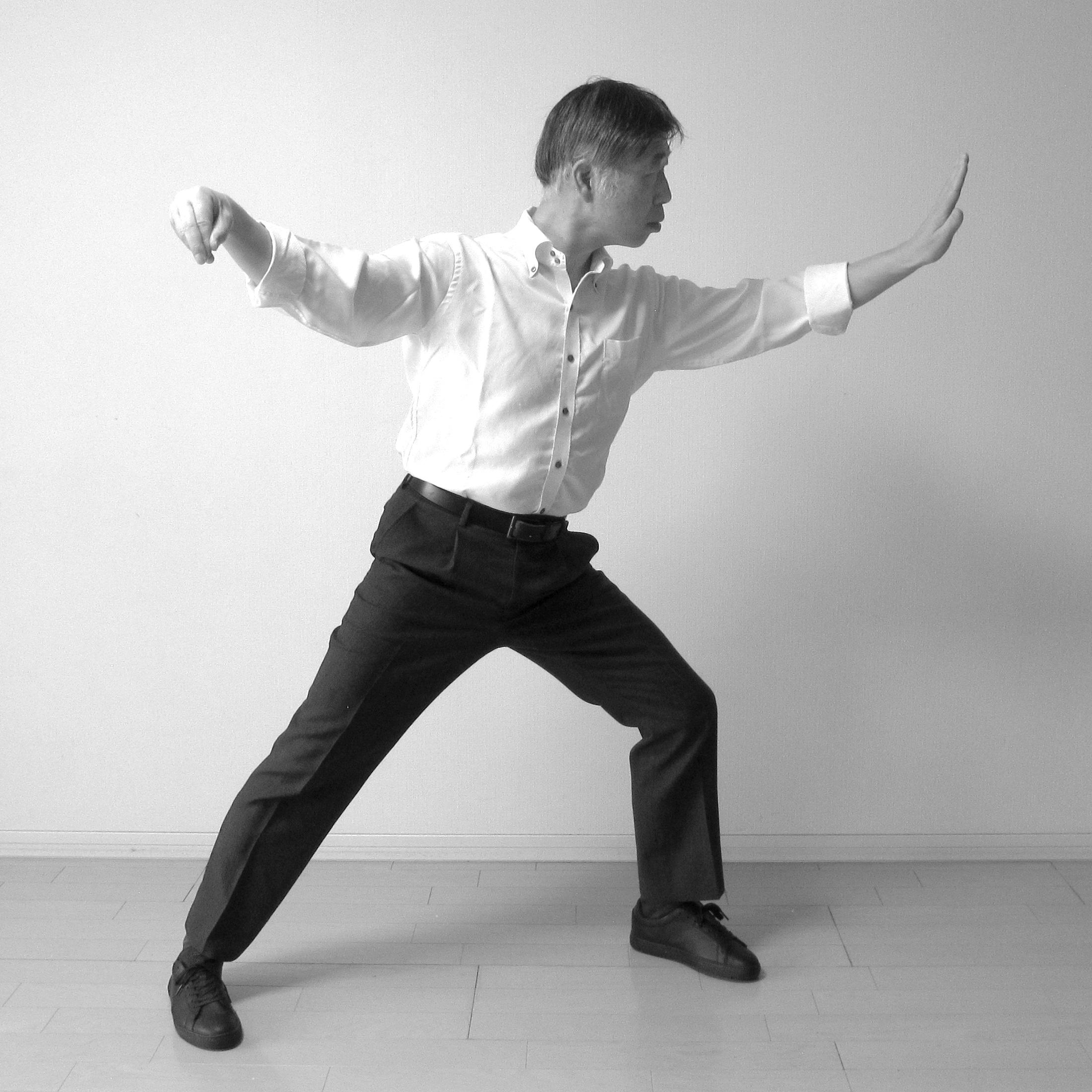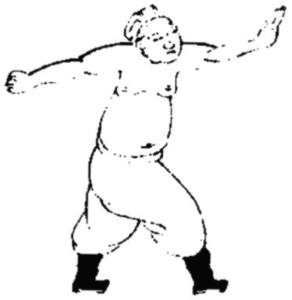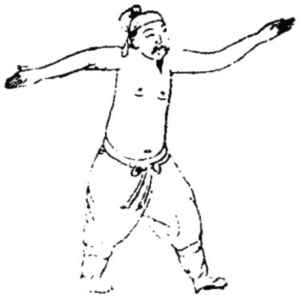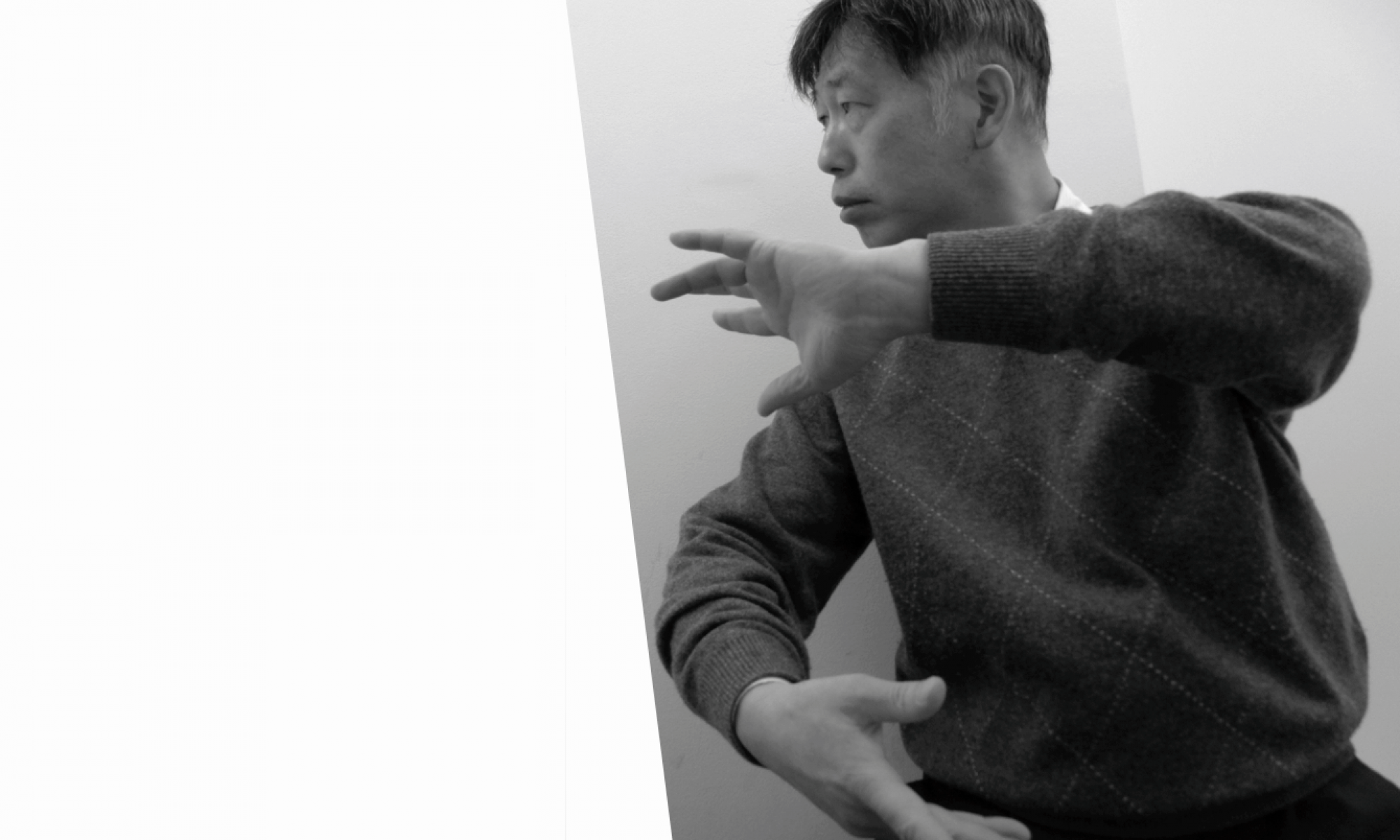
In Chen Taijiquan, Six-seal and Single whip are the techniques used as a set. Nowadays in our period, Taijiquan has been loosing martial arts aspects gradually.
Only the form has remained, and its application seems to be unknown to the public.
I often see cases in which the single whip is explained and replaced with a completely different technique other than palm striking.
All the techniques introduced are effective and wonderful, but is that the right way?
Single whip is undeniably a palm strike, and I could not imagine anything other through my traditional route.
Now, I would like to introduce the traditional application of Chen Taijiquan.
The opponent’s motion is stopped only for a moment with the technique of Six-seal attached to the opponent’s left chest and left shoulder. Raise the opponent’s left arm with your right hand and strike your left palm on to the opponent’s face. It is a close-distance hit from the six-seal position, but even if the opponent steps back, the left hand chases the opponent’s face like a whip motion.
The video shows in the case that the opponent has stepped back.
The Sing whip appears in the military manual book of “Jixiao Xinshu” written by Qi Jiguang, who was a Chinese military general of the Ming dynasty. The book consists of 18 volumes, and two styles of single whip are introduced in the 32-form of fist fighting in the 14th volume. See the figures. The single whip is a representative fighting technique of Taijiquan, but in fact, it existed even before the birth of Taijiquan.


The two figures show Single whip method with the left palm. However, the lower body stance is different, the first is a twist stances and the second is a normal stances. Taijiquan seems to have inherited a single whip with normal stance.
Single whip is based on the left palm strike, and “Horse patrol stands high” is based on the right palm strike. I wonder if you have a question, but this is how Taijiquan fights. Taijiquan never fights left and right equally. I would like to talk about this on another time.
